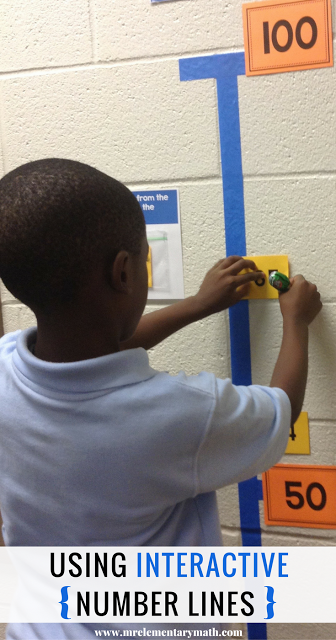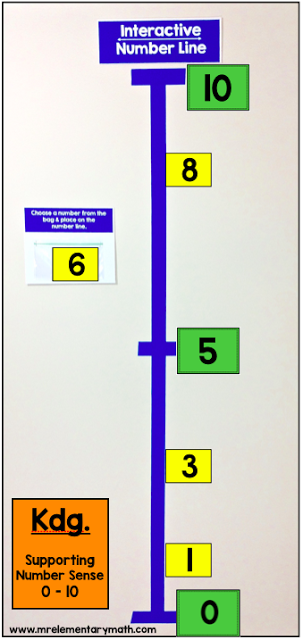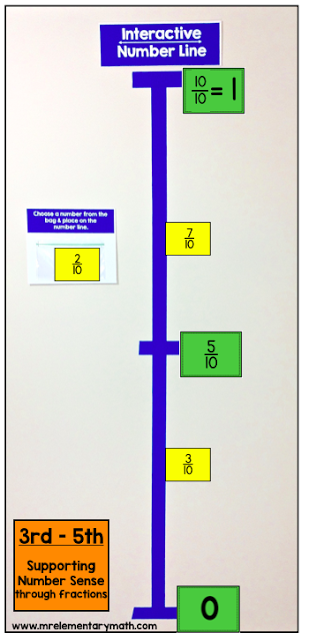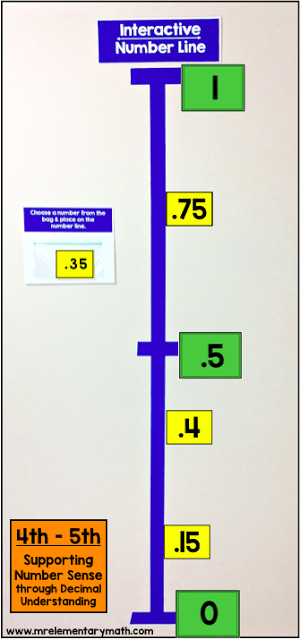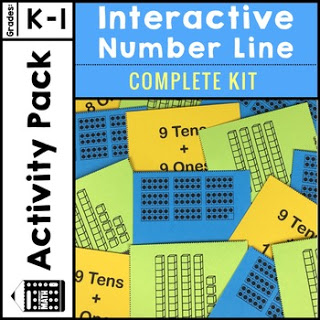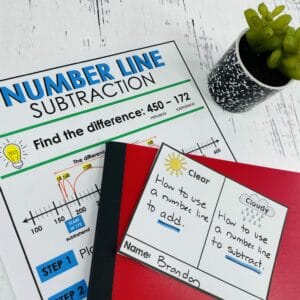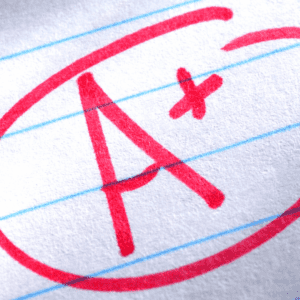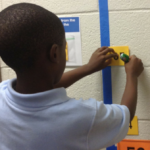
After some time, I came up with the Interactive Number Line.
You may be asking, “How can I make my own?” I am so glad you asked because it is pretty simple.
Materials Needed:
- Painter’s Tape
- Benchmark Numbers printed on card stock or index cards
- Ziplock bag to store Student Numbers
- Student Numbers printed on card stock or written on post-it notes
How to Create an Interactive Number Line:
1 – Use a long strip of painter’s tape to form a vertical number line on the wall
2 – Use smaller strips to create hash marks for benchmark numbers
3 – Place benchmark numbers next to each of the hash marks using number cards or sticky notes
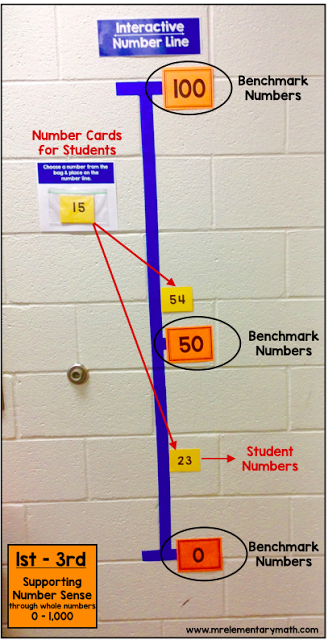 |
What is the Purpose of the Interactive Number Line?
Ways to use the Number Line:
Counting and understanding relationships between numbers are very important math concepts. Number lines can be used to focus on small bands of numbers.
- Kindergarten and 1st-grade teachers can focus on the number bands 0 through 20, using 0, 5,10, 15, 20 as benchmarks
- 2nd – 3rd-grade teachers can focus on number bands 0 – 1000, using 10s, 100s or multiples of 25 as benchmarks
- 4th – 5th-grade teachers can focus on multi-digit whole numbers, decimals or fractions
How Can I Use Interactive Number Lines with Lower Grade Students?
How Can I Use Interactive Number Lines with Upper Grade Students?
3 Things to Consider when Using Interactive Number Lines:
- Start by having the students make sense of the number line. It was helpful when the kids plotted the benchmark or friendly numbers within the number band before placing the Student Cards on the line. For example, when looking at the number band 0 – 100, the students found it helpful to determine where 10, 20, 30, 40, 50, 60, 70, 80 and 90 should be on the number line. This single step helped a lot because the span from just 0 through 100 was too broad for my students.
- Many schools have cinderblock walls. Use the lines between each cinderblock as a benchmark. This really supports spatial reasoning and distance between numbers. I didn’t do this step the 1st time and some students had problems visualizing the distance between each benchmark. This step worked as a scaffold for the students and me : )
- Use a vertical number line like the picture instead of a horizontal number line. Students really “see” how the larger numbers are represented on top and smaller numbers are toward the bottom. Plus a vertical number line is an EXCELLENT tool to help with the concept of rounding and decimals.
I LOVE this math tool! Can you tell? It would be great to have 2 or 3 of them setup in your classroom, this way students can work together to build their own understanding of numbers.
If you want to save time, I have created an Interactive Number Line Complete Kit for Numbers 0 – 150. Click the photo below to preview it.
If you decide to use the Interactive Number Line, let me know how it works in your classroom in the comments section below.
107
